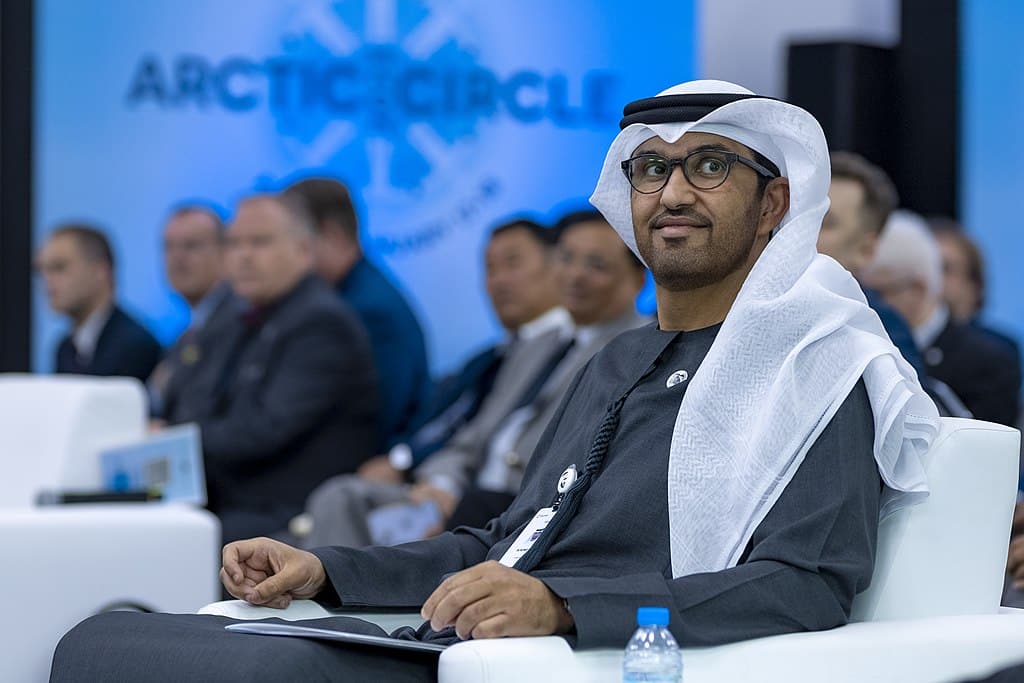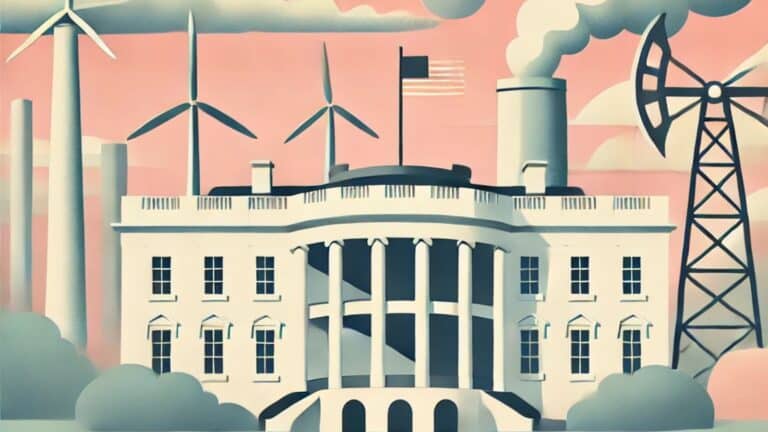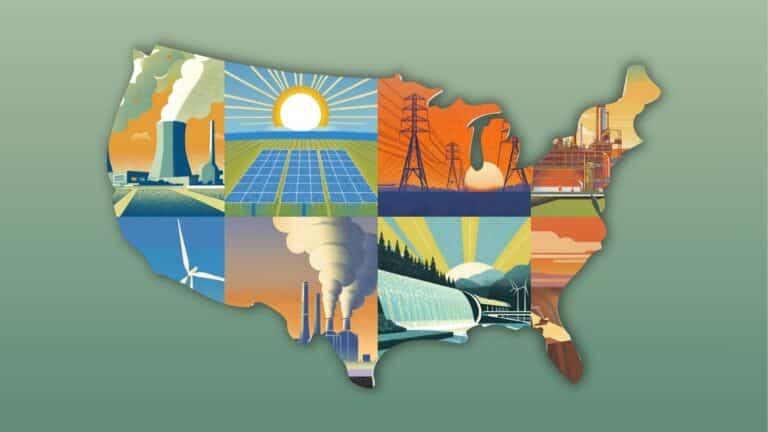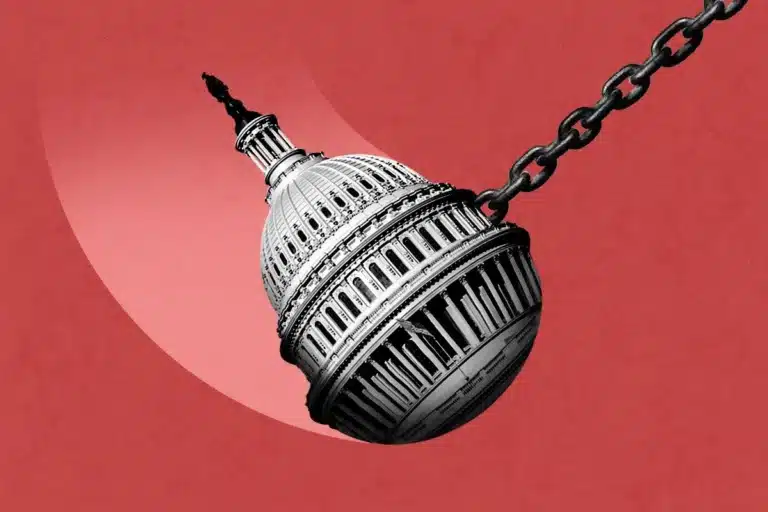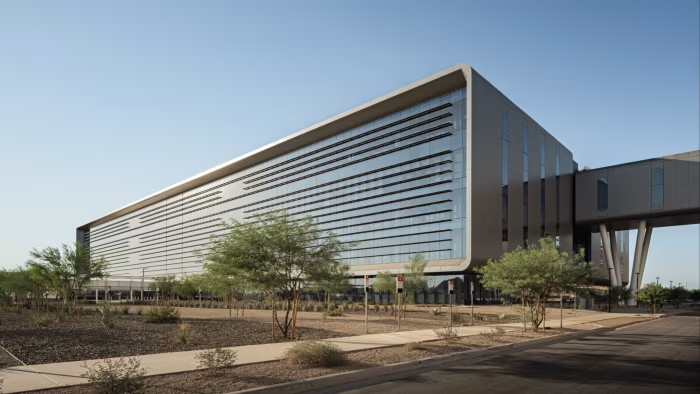This Energy Explained post represents the research and views of the author. It does not necessarily represent the views of the Center on Global Energy Policy. The piece may be subject to further revision. Contributions to SIPA for the benefit of CGEP are general use gifts, which gives the Center discretion in how it allocates these funds. Rare cases of sponsored projects are clearly indicated.
For a full list of financial supporters of the Center on Global Energy Policy at Columbia University SIPA, please visit our website at Our Partners. See below a list of members that are currently in CGEP’s Visionary Circle. This list is updated periodically.
Every annual meeting of the United Nations Framework Convention on Climate Change (UNFCCC) brings a chorus of scorekeeping. Did the so-called Conference of the Parties (or COP) live up to expectations? Did negotiators and other stakeholders create a new sense of momentum for avoiding or minimizing anthropogenic climate change? The impulse to grade each COP naturally reflects the global community’s hopes for climate solutions. But real breakthroughs are hard when 198 negotiating parties gather, each with distinct circumstances, politics, and opportunities that are sometimes in conflict with one another.
Disappointment often results. But COP28 in Dubai could be different in regard to the important topic of climate finance, as the authors discuss in this Q&A.
Why Is Climate Finance an Important Topic for COP28?
The host United Arab Emirates (UAE) has made clear that it intends to make progress on climate finance at COP28. In mid-October, Dr. Sultan Ahmed Al Jaber, the president-designate for COP28, circulated a letter discussing priorities for the upcoming summit.[1] Featured prominently was the need to “radically scale up climate financing” by “delivering on old promises” and “setting the framework” for new finance.
The availability of low-cost capital is vital for responding to climate change by building low-carbon and climate-resilient infrastructure. Most leaders in low- and middle-income countries, like their counterparts in wealthier nations, would prefer to avoid greenhouse gas emissions that cause climate change. However, developing countries generally face significant challenges in developing clean energy systems. Given that their first priority is energy security and affordability to support economic development, job creation, poverty reduction, and improving the standards of living, the resulting emissions are of secondary importance. Making matters worse, in the aftermath of the pandemic, many emerging economies are facing high indebtedness combined with elevated interest rates. Finally, international private capital is often scarce and expensive in developing countries because of the real and perceived investment risks.
Will Dubai Bring Progress on the Unkept $100 Billion Promise?
Al Jaber’s framing highlights the long and difficult history of UNFCCC discussions on climate finance. At COP15 in Copenhagen in 2010, advanced economies pledged to mobilize $100 billion annually to developing nations by 2020 to be directed toward climate adaptation and mitigation efforts. The funds delivered to emerging economies via bilateral and multilateral grants and loans, export credits, and private finance fell far short of the goal.[2] Worse yet, to align with sustainable development and climate goals, the true financing need in the developing world is far greater than the pledged $100 billion per year.[3] A successful step at COP28 would be to set a robust goal for the coming years—not just in terms of dollar amounts but also specifying the types of projects to fund, with an emphasis on adaptation—along with clear metrics for implementation and tracking of progress.
Will the Loss and Damage Fund Finally Come to Life?
For years, one of the most sensitive issues in the COP debates has been whether countries that have contributed the most to historical emissions—first and foremost the United States—should compensate emerging and developing economies that are already bearing the brunt of a changing climate. Last year, at COP27 in Sharm El Sheikh, countries finally agreed in principle to create a Loss and Damage Fund, a decision that was deemed the crowning moment of the summit.[4] As is often the practice at the COPs, important details were left to be decided later, including which countries should make the contributions and how much, which countries receive the money, and how administrative matters would be handled.[5]
Many developing countries resisted the suggestion that the World Bank host the new fund, asserting that the Bank defers excessively to advanced economies. Meanwhile, many argue that not only developed countries but also large oil and gas producers, such as the UAE and Saudi Arabia, should contribute capital to the fund.[6] In early November, after several contentious rounds of debate since Sharm El Sheikh, negotiators reached a tentative agreement to establish the Loss and Damage Fund on an interim basis at the World Bank.[7] Formal endorsement of this deal—perhaps enabled in part by the contribution of funds from the host government of the UAE—would represent an important achievement for COP28.[8]
Will Multilateral Development Banks Heed Calls for Reform?
For years, multilateral development banks (MDBs), led by the World Bank, have struggled to align their approach to supporting economic and social progress with climate priorities. This struggle reached a crescendo in 2023 with the appointment of a new World Bank president, Ajay Banga, after his predecessor garnered criticism for appearing to doubt the reality of climate change. Numerous stakeholders—from key governments to civil society development and environmental advocates—have called for reform of the MDBs to enable them to be more effective in mobilizing climate finance for emerging economies.[9]
MDBs could, in principle, facilitate an increased flow of both official funds and leveraged private capital to address the ongoing climate crisis. Last year, a G20 panel reviewing MDBs made reform recommendations.[10] The momentum for reforming the global financial architecture has only increased since then, as evidenced by discussions at the Paris Summit, the G20 Summit, and the African Climate Summit. [11], [12], [13]
Among the recommendations are changes in the approach to defining the MDBs’ risk tolerance, expanding the use of financial innovation to increase the impact of the banks’ capital, and reevaluating their capital adequacy frameworks. There are also suggestions for tripling MDB financing along with increasing special drawing rights (SDR) pledges and using unused SDRs.[14] Some have suggested new facilities overseen by one or more MDBs or a blended finance structure to address longstanding challenges like exchange rate risk.[15], [16], [17] The MDBs have expressed a readiness to evolve to meet the climate challenge, although specific changes will require the support of the shareholder governments that direct the banks.[18] COP28 could be a critical forum to agree on the outlines of the changes.
Can the Carbon Market Catalyze Financing for Developing Countries?
A final dimension of the climate finance landscape—the voluntary carbon market—has considerable theoretical potential to generate revenues for developing nations with rich forestry resources, but it faces both organizational uncertainty and integrity challenges. At COP26 in Glasgow, negotiators agreed on the initial rules for Article 6 of the Paris Agreement, which is deemed to be the rulebook governing carbon markets.[19] COP27 made further progress by putting one of these steps into action with the authorization of the first-ever agreement, between Switzerland and Ghana, to trade carbon credits under national climate pledges.[20] Additionally, the final text from COP27 for the first time included a section on forests, covering the use of “nature-based solutions” and anti-deforestation measures to curb emissions.[21], [22] Nevertheless, critical issues regarding Article 6 remain unresolved, including clearly defining the necessary administrative infrastructure for the multilateral carbon credit market and accounting methodologies for addressing the risks of permanence, leakage, and double counting.[23], [24] These may require greater progress than is likely to be achieved at COP28.
Will the Climate Finance Discussions at COP28 be a Glass Half Full?
If more plentiful finance is a prerequisite for global progress on climate change mitigation and adaptation—as is widely believed—then one of the advantages of having a finance-savvy state like the UAE host COP28 is that it may be able to promote real progress on several climate finance fronts. Between now and the end of the climate talks in Dubai, challenging talks and hard-headed compromises will be needed. But it is possible that when the scorecards of COP28 are issued, true steps forward are recorded in the key area of climate finance.
CGEP’s Visionary Circle
Corporate Partnerships
Occidental Petroleum Corporation
Tellurian Inc
Foundations and Individual Donors
Anonymous
Anonymous
the bedari collective
Jay Bernstein
Breakthrough Energy LLC
Children’s Investment Fund Foundation (CIFF)
Arjun Murti
Ray Rothrock
Kimberly and Scott Sheffield
Notes
[1] Sultan Ahmed Al Jaber, “Letter from the President-Designate of COP28/CMP18/CMA5, and UAE Special Envoy for Climate Change,” United Nations Climate Change, October 17, 2023. https://unfccc.int/documents/632560.
[2] Jocelyn Timperley, “The Broken $100-Billion Promise of Climate Finance—and How to Fix it,” Nature, October 20, 2021. https://www.nature.com/articles/d41586-021-02846-3.
[3] International Energy Agency, “Scaling Up Private Finance for Clean Energy in Emerging and Developing Economies,” June 2023, https://www.iea.org/reports/scaling-up-private-finance-for-clean-energy-in-emerging-and-developing-economies.
[4] Ben Geman and Andrew Freedman, “COP27 Summit Yields Historic Deal on Climate Damage Fund,” Axios, November 20, 2022, https://www.axios.com/2022/11/20/cop27-climate-deal-loss-and-damage-fund-coal.
[5] UNEP, “What You Need to Know About the COP27 Loss and Damage Fund,” November 29, 2022, https://www.unep.org/news-and-stories/story/what-you-need-know-about-cop27-loss-and-damage-fund.
[6] Fiona Harvey, “‘Petrostate Windfall Tax Would Help Poor Countries in Climate Crisis, says Brown,” Guardian, September 25, 2023, https://www.theguardian.com/environment/2023/nov/05/countries-agree-key-measures-to-fund-most-vulnerable-to-climate-breakdown.
[7] UNFCCC, “Fifth meeting of the Transitional Committee on the operationalization of the new funding arrangements for responding to loss and damage and the fund established in paragraph 3 of decisions 2/CP.27 and 2/CMA.4,” November 4, 2023. https://unfccc.int/sites/default/files/resource/TC5_4_Cochairs%20draft%20text_Rev2.pdf.
[8] Fiona Harvey, “‘Loss and damage’ Deal Struck to Help Countries Worst Hit by Climate Crisis,” Guardian, November 5, 2023, https://www.theguardian.com/environment/2023/nov/05/countries-agree-key-measures-to-fund-most-vulnerable-to-climate-breakdown.
[9] Janet Yellen, “Remarks by Secretary of the Treasury Janet L. Yellen at the Center for Global Development,” US Treasury, October 6, 2022, https://home.treasury.gov/news/press-releases/jy0997.
[10] G20 Expert Panel, “Boosting MDBs’ Investing Capacity: An Independent Review of Multilateral Development Banks’ Capital Adequacy Frameworks,” October 1, 2022, https://www.dt.mef.gov.it/export/sites/sitodt/modules/documenti_it/news/news/CAF-Review-Report.pdf.
[11] Summit for A New Global Financing Pact, “Toward More Commitments to Meet the 2030 Agenda?” June 9, 2023, https://focus2030.org/Summit-for-a-New-Global-Financing-Pact-towards-more-commitments-to-meet-the.
[12] G20 India, “G20 Roadmap for the Implementation of the Recommendations of the G20 Independent Review of Multilateral Development Banks’ Capital Adequacy Frameworks,” July 2023, https://www.g20.org/content/dam/gtwenty/gtwenty_new/document/G20_Roadmap_for_MDBCAF.pdf.
[13] Africa Renewal, “Africa Climate Summit: Nairobi Declaration Makes Strong Push for Accelerated Climate Action and Financing Mechanisms,” September 8, 2023, https://www.un.org/africarenewal/magazine/september-2023/africa-climate-summit-nairobi-declaration-makes-strong-push-accelerated.
[14] The Triple Agenda, “Strengthening Multilateral Development Banks,” Report of the Independent Experts Group: Volume 1, June 30, 2023, https://icrier.org/g20-ieg/pdf/The_Triple_Agenda_G20-IEG_Report_Volume1_2023.pdf.
[15] Avinash Persaud, “Unblocking the Green Transformation in Developing Countries with a Partial Foreign Exchange Guarantee,” Climate Policy Initiative Working Paper, June 7, 2023, https://www.climatepolicyinitiative.org/wp-content/uploads/2023/06/An-FX-Guarantee-Mechanism-for-the-Green-Transformation-in-Developing-Countries.pdf.
[16] Gautam Jain, “A Potential Path for Alleviating Currency Risk in Emerging Market Green Bonds,” Center on Global Energy Policy, Columbia University, September 7, 2023, https://www.energypolicy.columbia.edu/publications/a-potential-path-for-alleviating-currency-risk-in-emerging-market-green-bonds/.
[17] Philippe Benoit and Jonathan Elkind, “How Kerry’s Energy Accelerator Can Help to Supercharge Green Investments,” The Hill, July 25, 2023, https://thehill.com/opinion/energy-environment/4116244-how-kerrys-energy-accelerator-can-help-to-supercharge-green-investments/.
[18] The World Bank, “Evolving the World Bank Group’s Mission, Operations, and Resources: A Roadmap,” December 18, 2022, https://documents1.worldbank.org/curated/en/099845101112322078/pdf/SECBOS0f51975e0e809b7605d7b690ebd20.pdf.
[19] Seth Kerschner, Taylor Pullins, Ingrid York, William Grazebrook, Tom Robinson, and Janina Moutia-Bloom, “Negotiations on Carbon Credits Expected to Continue at COP27,” White & Case, September 21, 2022, https://www.whitecase.com/insight-alert/negotiations-carbon-credits-expected-continue-cop27.
[20] UNDP, “Ghana, Vanuatu, and Switzerland Launch World’s First Projects Under New Carbon Market Mechanism Set Out in Article 6.2 of the Paris Agreement,” November 12, 2022, https://www.undp.org/geneva/press-releases/ghana-vanuatu-and-switzerland-launch-worlds-first-projects-under-new-carbon-market-mechanism-set-out-article-62-paris-agreement.
[21] Alec Luhn, “COP27 Boosts Carbon Trading and ‘Non-Market’ Conservation: But Can They Save Forests?” Mongabay News & Inspiration from Nature’s Frontline, November 22, 2022, https://news.mongabay.com/2022/11/cop27-boosts-carbon-trading-and-non-market-conservation-but-can-they-save-forests/.
[22] UNFCCC, “What is REDD+?”, https://unfccc.int/topics/land-use/workstreams/redd/what-is-redd#.
[23] Subrata Chakrabarty and Ashwini Hingne, “Operationalizing Article 6: Issues for COP28 To Address,” WRI India, February 23, 2023, https://wri-india.org/blog/operationalizing-article-6-issues-cop28-address.
[24] Seth Kerschner, Ingrid York, William Grazebrook, and Danielle Leben, “Progress made on Paris Agreement Article 6.4 at Bonn; Talks to Continue in Dubai,” White & Case, July 5, 2023, https://www.whitecase.com/insight-alert/progress-made-paris-agreement-article-64-bonn-talks-continue-dubai#article-content.




